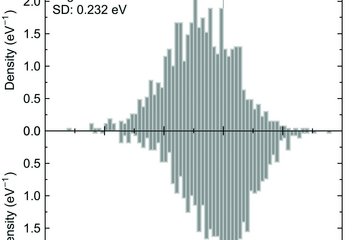All genres
61.
Talk
Friction and wear of austenite steel: plasticity and crack formation. 71st Annual Meeting & Exhibition of the Society of Tribologists and Lubrication Engineers (STLE 2016), Las Vegas, NV, USA (2016)
62.
Talk
Multiscale Simulations of Microstructure Evolution. Fracture & Fatigue, Mikromechanische Materialmodellierung, Technischen Universität Bergakademie Freiberg, Freiberg, Germany (2016)
63.
Talk
Global and local fracture properties of interfaces for robust material combinations in power devices. Nanomechanical Testing in Materials Research and Development V, ECI Conferences, Albufeira, Portugal (2015)
64.
Talk
Microstructure and micro-asperity evolution. 9th European Solid Mechanics Conference (ESMC9), Madrid, Spain (2015)
65.
Talk
Nanomechanical testing under environmental conditins of Fe-based metallic glasses. 22st International Symposium on Metastable Amorphous and Nanostructured Materials, ISMANAM 2015, Paris, France (2015)
66.
Talk
Nanotribology and crack initiation. Institute for Materials Testing, Materials Science and Strength of Materials, University of Stuttgart, Stuttgart, Germany (2015)
67.
Talk
Experiments & Simulation on Multiple Scales. Werkstoffmechanik: Werkstoffmechanik von Energiewerkstoffen, RWTH Aachen, Aachen, Germany (2015)
68.
Talk
Nanotribology and Microstructure Evolution in Pearlite. Frühjahrstagung der Sektion Kondensierte Materie der Deutschen Physikalischen Gesellschaft
, Berlin, Germany (2015)
69.
Talk
Roughness and Microstructure Development during Nanotribology in Austenite. DPG-Spring Meeting, Berlin, Germany (2015)
70.
Talk
Nanotribology: Wear Mechanisms in Austenite. Materials Science and Engineering-MSE 2014, Darmstadt, Germany (2014)
71.
Talk
Nanotribology: Plasticity and Wear of Austenite. Bridging the scales in tribology and wear, Düsseldorf, Germany (2014)
72.
Talk
Shear deformation in FCC metals: Fundametal and applied research. Seminar at Institute of Materials Physics, Georg-August-Universität Göttingen, Göttingen, Germany (2014)
73.
Talk
Nanotribology mechanisms due to microcontacts in Austenite. 3rd European Symposium on Friction, Wear and Wear Protection, Karlsruhe, Germany (2014)
74.
Talk
Combining Atomistic and Dislocation Dynamics into a Concurrent Multiscale Model. Seminar zur Physik der kondensierten Materie, Institut für Theoretische und Angewandte Physik, Universität Stuttgart, Stuttgart, Germany (2013)
75.
Talk
Deformation localization and strain hardening during micro shear experiments on gold in the SEM. Nanomechanical Testing in Materials Research and Development IV, Olhão (Algarve), Portugal (2013)
76.
Talk
Joining 3D Dislocation Dynamics and 3D Molecular Dynamics into a Concurrent Multiscale Model. SES 50th Annual Technical Meeting and ASME-AMD Annual Summer Meeting, Providence, RI, USA (2013)
77.
Talk
Discrete Disclination Dynamics in comparison to Discrete Dislocation Dynamics. SES 50th Annual Technical Meeting and ASME-AMD Annual Summer Meeting, Providence, RI, USA (2013)
78.
Talk
Discrete Disclination Dynamics & Discrete Dislocation Dynamics. 4th International Conference on Ferromagnetic Shape Memory Alloys, Boise, ID, USA (2013)
79.
Talk
Studying very short cracks with a 3D multiscale model. DPG-Frühjahrstagung der Sektion Kondensierte Materie (SKM), Regensburg, Germany (2013)
80.
Talk
Scale Bridging Modeling of Hydrogen Embrittlement. 2012 MRS Fall Meeting & Exhibit, Boston, MA, USA (2012)











